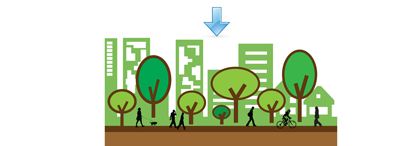WELCOME
Lyndal Plant Urban Forester (LPUF) recognises the collective forest of trees growing across all urban landholdings as a network of multi purpose green assets, critical to the liveability of towns and cities. As a highly reputed specialist, LPUF offers robust and relevant evidence-gathering to build and review urban forest policy and strategy.
Our goal is to help communities recognise, celebrate and sustain a fit-for-purpose urban forest.
 |
70% of the world’s population is expected to live in cities by 2050 (United Nations 2014), including at least 8 million more people in Australian cities (Infrastructure Australia 2015). The shape of our cities is changing in response to such rapid population growth, alongside climate, social and economic change. The challenge for cities already committed to more sustainable transit oriented and infill development patterns is to deliver adaptive, affordable and liveable neighbourhoods. |
 |
There has never been a more important time for civic leaders, transport, greenspace and land-use planners to present the collective of urban trees as a multi-purpose resource, worthy of investment and enhancement to support attractive and walkable neighbourhoods alongside other elements of density done well. Yet home-grown research suggests trends towards least tree cover in areas of highest dwelling density and heat wave vulnerability (Daniel et al 2016, NNCARF 2012), socio-economic inequities in tree cover distribution (Shanahan et al 2014; Kraft and Fryd 2015) and downsizing of street trees (Plant and Sipe 2016). |
 |
LPUF can help you identify the shifts in policy, practice and partnerships at state, regional and local level needed to:
|
